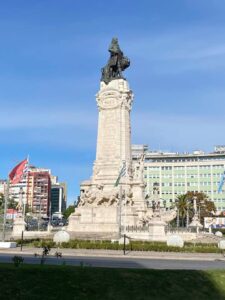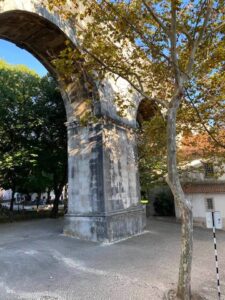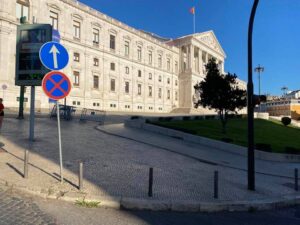


















































As you may remember from yesterday’s post, we’ve spent the last several months learning about dental surgeons in countries other than the United States, where we live. Because of the extensive radiation Dempsey received five years ago (he’s now completely recovered from oropharyngeal cancer), his teeth have all begun to disintegrate. His choices are to get dentures or to have implants.
In the case of whole mouth teeth replacement, the most popular procedure is called all-on-4 or all-on-6. This would entail all of his remaining teeth being extracted, then placement of 4 or 6 zirconium implants into the top jaw and into the bottom jaw. An arch of temporary acrylic teeth are affixed to the implants for approximately four months, and two arches, upper and lower, when all the teeth are replaced. When the implants have grown into the jaw bone, permanent teeth are affixed. Zirconia is a relatively new treatment, and long-term data is not yet available. However, dental surgeons expect the implants to last for 15 to 20 years or more, probably a lifetime for people of middle age and beyond.
This treatment is suitable for Dempsey because the dental surgeon is able to take advantage of the areas of his jaw that have not suffered severe bone loss, and have not received too high a dose of radiation. It took us some time to get a “map” of his mouth from the group that designed the pattern of radiation used in his treatment (they are consultants to Cancer Treatment Centers in Phoenix, and theirs is a highly specialized area of work).
Radiation is measured in Grays. We researched and consulted two dental surgeons in Texas, and we learned that in areas of the jawbone that received more than 60 total Grays of radiation, the patient should not have any invasive dental work performed because there is a danger of necrosis of the bone (bone death) which would be catastrophic. The total doses Dempsey received were less than 60, except in the case of four teeth in his lower right jaw. Those received 70, so it was important that the dental surgeon we choose understand that any implants had to be placed away from that area. This is all pretty technical, but it was important – and a bit daunting, since neither one of us is an expert in the field!
Our two primary considerations were expertise and price, in that order. As I wrote yesterday, average price for this treatment is $40,000 where we live in Texas. A woman we met at the clinic we finally chose told us one well-known dentist near where she lives in Colorado charges $70,000.
There are a couple of ways to approach searching for a dentist internationally. One is to research on your own, and the other is to make inquiries through some of the organizations that represent dentists all over the world. Dental Departures (headquartered in Singapore), Patients Beyond Borders (located in Chapel Hill, North Carolina) The International Association for Medical Assistance to Travellers, (IAMAT), and The Medical Tourism Association are just a few of the groups that provide information about dental care abroad. Some organizations make direct referrals in exchange for a commission from the clinics.
When we first began looking, we considered clinics in Eastern Europe, where we knew we wanted to travel. Croatia, the Czech Republic, Poland, Hungary and Turkey are frequent dental tourism destinations, as are Mexico, Thailand, Spain, Costa Rica, the Philippines, and Malaysia. However, as we spent four months in Europe last year, we decided to concentrate on North America.
We found dental clinics with good reputations in Costa Rica and Mexico. Once we identified dentists who were accredited with the American Dental Association (many Latin American dentists have trained in the U.S. and maintain their accreditation, as well as returning for frequent post-graduate training), we turned to social proof. One of the things we appreciate most about living in the age of the internet is being able to find reviews by previous patients. Then we called and talked to representatives of the clinics. Many clinics specialize in catering to Americans and Canadians, and they employ some fluent English speakers.
We considered a large clinic with an excellent reputation in San Jose, Costa Rica and a clinic located in Cancun, Mexico. However, when we spoke to them we realized they do not send patients home with attached temporary teeth. Instead, they provide dentures (we’d already rejected dentures as uncomfortable and difficult to retain in place) to wear until the implants achieve osteointegration (when the jaw bone grows around the implant).
We were very interested in a dentist in Juarez, across from El Paso, as we have friends who go there for all their dental work. Also, Juarez is just an hour and a half away from the little town in New Mexico we frequently visit. However, that dentist also provided a denture for the first few months.

Finally, we decided upon Cosmetic & Implant Dentistry Center in Los Algodones, Baja California, Mexico, the practice headed by Dr. Jose Valenzuela. Algodones is the northernmost town in Mexico (and in Latin America), located on the border of the U.S. just below the border of the states of Arizona and California. It’s sometimes referred to as Molar City because of the 300 dental clinics congregated there. There are also opticians and many other medical practitioners, as well as pharmacies where prescriptions are not needed and medications are a fraction of the cost in the U.S. We met American retirees who go to Algodones for all their dental and medical needs.
The cost of treatment by Dr. Valenzuela for the all-on-4 implants is $19,000. That was not the lowest price we found, but combined with the reputation of the clinic, we felt good about it. Of course, Los Algodones is not near the Texas border, so the trip involved our flying from Austin to Phoenix, renting a car and paying for lodging. Still a bargain, we felt. In our next post, we’ll share Dempsey’s experience, and what it was like to travel to Los Algodones.
Would you cross an international border? It's a question more and more Americans (and Canadians and Western Europeans and Aussies) are answering with a resounding "Yes!". In fact, in 2022 more than 3 million people have become "dental tourists." The primary reason...
On Saturday our return trip to Austin was long. We were delayed in Vegas for almost 6 hours; fortunately I had a book. When we walked out of the Austin airport at 1:30 a.m., the heat was intense, but it felt good to be home.
We spent yesterday afternoon and today with Dee Broughton, who now lives near Mt. Rainier in rural southern Washington. We homeschooled our kiddos together, long ago.
0 Comments